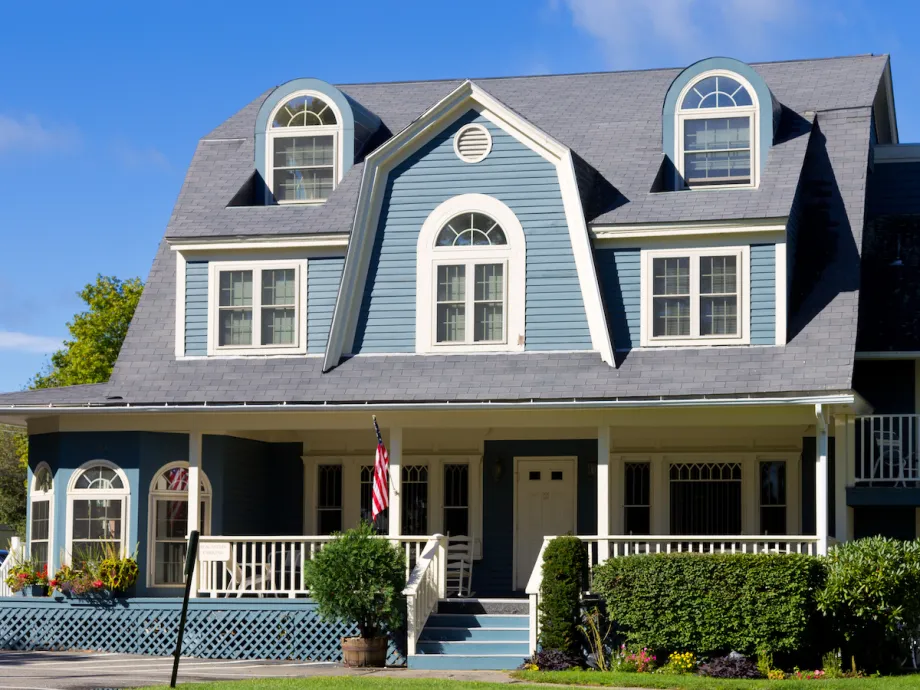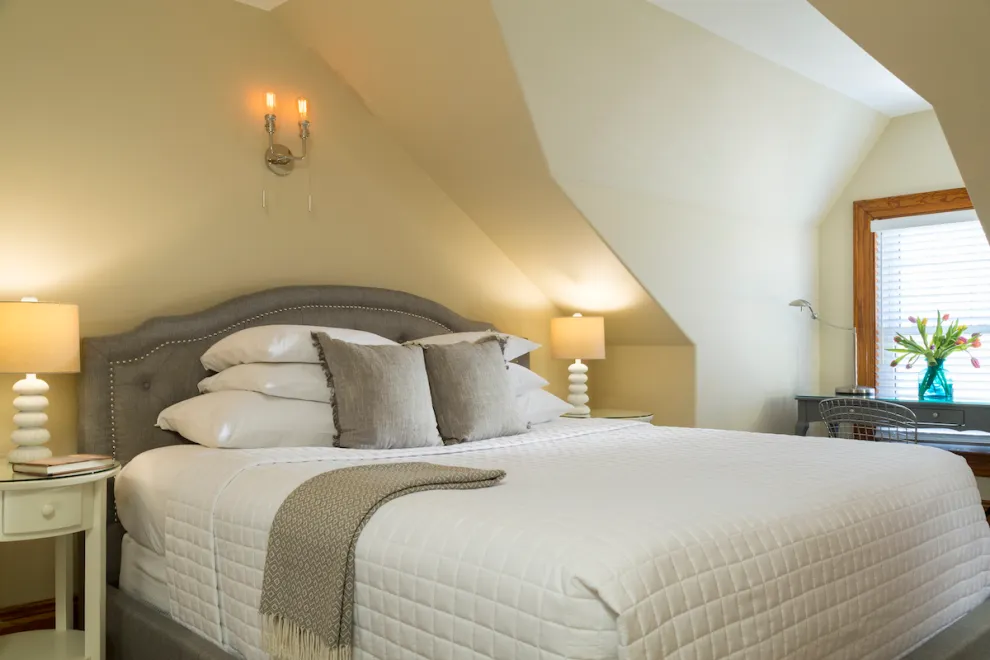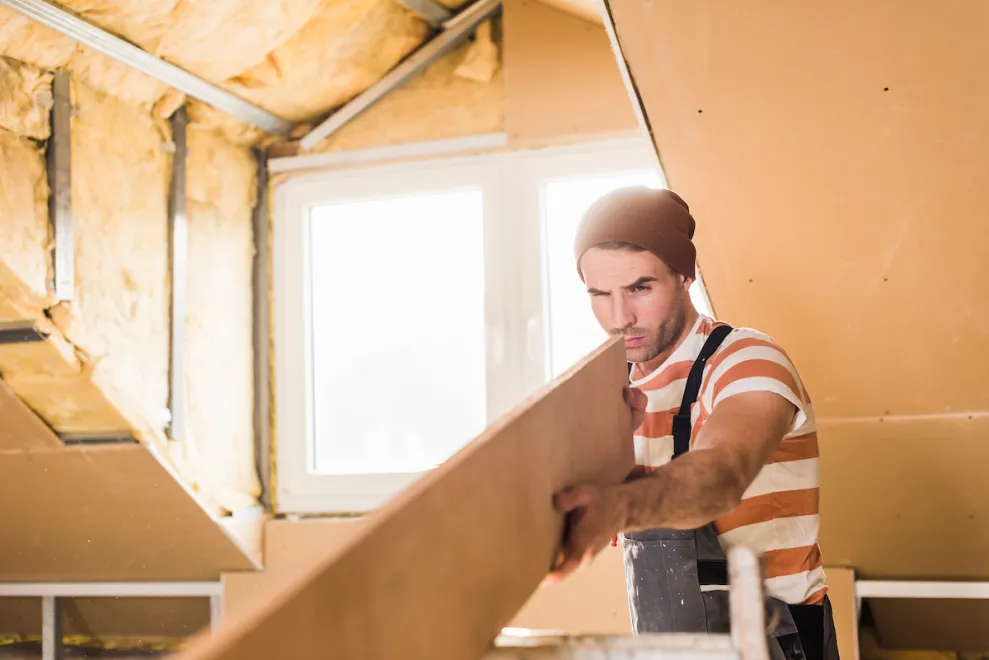When it comes to making your home more comfortable and stylish, sometimes the smallest changes can make the biggest difference. Dormer windows are a perfect example of this. These charming little roof additions can transform a dark, cramped attic into a bright, airy, and usable space. Whether you’re dreaming of an extra bedroom, a cozy office, or simply more natural light, dormer windows open up a world of possibilities for your home.
But what exactly is a dormer window? At its core, a dormer is a window that projects vertically from a sloping roof. This clever design not only lets in sunlight and fresh air but also adds headroom, making upper floors or attic spaces feel larger and more welcoming.
The word “dormer” comes from the French verb “dormir,” meaning “to sleep,” because these windows were originally designed to bring light into attic sleeping quarters. Today, dormers are much more than just functional—they’re a key architectural feature that can enhance the look and feel of a home.
If you’re new to dormers, it might be confusing to understand all the different styles and options available. From classic gable dormers with their triangular peaks to smooth, curved eyebrow dormers that add a touch of elegance, there’s a style to suit almost every home design.
Some dormers provide just a small window for light and ventilation, while others can span a large portion of the roof, creating a full room with plenty of space.
Of course, like any home improvement project, adding dormer windows comes with its own set of advantages and challenges. They can increase your home’s value and improve your living space, but they also require careful planning, a budget, and skilled installation. Some types of dormers are more expensive or complex to build than others, and poor workmanship can lead to leaks or structural issues.
In this article, we’ll break down everything you need to know about dormer windows—from the most popular styles to their pros and cons, costs, and how installation works. Whether you’re building a new home or remodeling your existing one, this guide will help you decide if dormers are the right choice for you—and how to get the best results if you decide to add them.
What Are Dormer Windows?

Dormer windows are structures that stick out vertically from a sloping roof and include a window. They add headroom, light, and airflow to upper floors or attic spaces. The word “dormer” comes from the French word for “to sleep,” as dormers were originally used to light attic sleeping areas. Today, dormers are common in many home styles and add both beauty and practicality.
Dormer vs. Gable
Dormers and gables are both roof elements that project outward but serve different purposes. A gable is the triangular part of a wall between roof edges, giving a home its classic shape. A dormer, on the other hand, is a windowed projection that creates extra space and light inside. While gables define the home’s silhouette, dormers improve interior space and brightness.
Dormer Window Styles
Gable Dormer
This is the most common dormer style. It has a triangular roof with two sloping sides that meet at a peak. Gable dormers are simple and affordable, fitting well with many architectural styles.
Gambrel Dormer
Found often on Dutch Colonial homes, the gambrel dormer has two slopes on each side, like a barn roof. This shape offers more headroom and bigger windows, making upper rooms feel spacious.
Hipped Dormer
A hipped dormer has slopes on all four sides that meet at a peak, giving a neat, elegant look. It blends nicely with homes that have hipped roofs for a cohesive appearance.
Shed Dormer
This dormer style features a single, sloped roof that usually runs the length of the dormer. Shed dormers maximize interior space and light, and they fit well with modern or minimalist designs.
Eyebrow Dormer
With a gently curved roof, the eyebrow dormer looks like a soft arch. It adds a subtle, elegant touch without overwhelming the home’s design, often seen in classical-style houses.
Bonnet Dormer
Bonnet dormers have a curved, bell-shaped roof that extends outward, offering a unique and decorative look. These are often found on Victorian or French-inspired homes.
Wall Dormer
Unlike dormers that protrude from the roof, wall dormers are built into the exterior wall. They’re a good choice when roof space is limited or projecting dormers aren’t possible.
Lucarne Dormer
These are narrow, vertical dormers typically seen in Gothic or medieval architecture, like on church spires. They provide light and air to upper levels in a slender form.
Blind Dormer
A blind dormer looks like a dormer from the outside but has no window. It’s purely decorative, adding architectural interest without adding interior space.
Pros and Cons of Dormer Windows

Pros
- More Natural Light: Dormers brighten upper floors with extra sunlight.
- Better Ventilation: Additional windows improve airflow and air quality.
- Extra Usable Space: Dormers can turn cramped attics into bedrooms, offices, or playrooms.
- Improved Look: They add character and style, boosting your home’s curb appeal.
- Higher Property Value: Well-designed dormers can increase your home’s market worth.
Cons
- Costly Installation: Adding dormers can be expensive, especially for complex designs.
- Risk of Leaks: Poor installation may cause water damage over time.
- Structural Changes Needed: Your roof might require reinforcement to support dormers.
- Permits and Regulations: Depending on where you live, you might need building permits.
Dormer Window Cost
The price for dormers depends on their style, size, materials, and where you live. On average, adding a dormer costs between $12,000 and $30,000. Simple gable dormers are usually less expensive, while larger shed dormers can cost significantly more.
Here’s a rough cost guide by dormer type:
- Gable Dormer: $5,000 – $12,000
- Shed Dormer: $10,000 – $40,000+
- Eyebrow Dormer: $6,000 – $15,000
- Hip Dormer: $5,000 – $12,000
- Flat Roof Dormer: $8,000 – $20,000
These prices typically cover materials and labor but may not include interior finishes or extra structural work.
Dormer Window Installation

Dormer Windows in New Home Construction
If you’re building a new home, planning dormers early means they can be smoothly integrated. This helps with structural support and ensures the dormers fit the home’s overall style perfectly.
Dormer Windows in Remodeling Projects
Adding dormers to an existing home can be trickier but worthwhile. A professional needs to check your current roof structure to see if dormers are possible and safe.
Timing
Installing dormers during a roof replacement or major renovation is ideal. This minimizes extra costs and avoids problems with matching roofing materials.
Roof Framing
Adding dormers may mean changing the roof’s framing. A structural engineer can advise on the necessary adjustments to keep everything stable.
Roof Shingles
You’ll likely need new or adjusted shingles around the dormer to keep your roof waterproof and secure.
Access to Finished Attic Space
If your attic is already finished, dormer installation might disrupt your space. Good planning will help reduce hassle and damage.
Final Thoughts
Adding dormer windows to your home is more than just a design choice—it’s an investment in your living space and overall comfort. Dormers have a unique way of transforming rooms that might otherwise feel cramped, dark, or unused, turning them into bright, functional areas full of life and personality.
Whether you want to create an extra bedroom, a home office, or simply add some architectural charm to your roofline, dormer windows offer a flexible solution that blends style and practicality.
One of the best things about dormers is their ability to increase natural light and ventilation. Many older homes have attics or upper floors that are dark and stuffy, making them less appealing to use.
Dormers bring in sunlight and fresh air, instantly improving the atmosphere and making those spaces much more enjoyable. Plus, by adding extra headroom, dormers allow you to maximize the usable square footage of your home, which is a huge benefit in houses where space is at a premium.
That said, dormer windows aren’t a one-size-fits-all solution. The style and size you choose will affect not only the look of your home but also the complexity and cost of the project.
Some dormers, like simple gable styles, are easier and more affordable to install, while others, such as large shed dormers or curved eyebrow dormers, require more planning, specialized materials, and expert craftsmanship. It’s important to weigh the benefits against the potential challenges, like structural changes and the need for proper waterproofing.
Cost is another factor to consider. While dormers can add significant value to your property, they do come with a price tag. Planning carefully and working with trusted professionals will help you get the most value from your investment. Good design and quality installation will also minimize future maintenance issues, such as leaks or drafts.
Ultimately, dormer windows can elevate your home’s style and functionality when done right. They create inviting spaces that feel open and bright, boosting both your enjoyment of your home and its resale appeal.
If you’re thinking about adding dormers, take the time to research styles, costs, and installation requirements, and consult with experienced architects or contractors. This way, you’ll ensure the dormers you choose not only look great but also stand the test of time.
In summary, dormer windows are a smart and stylish way to enhance your home. With thoughtful planning and the right help, you can transform your attic or upper floors into beautiful, practical living spaces that you and your family will love for years to come.




